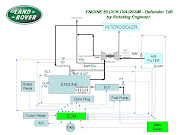In 1978 F. Stanley Nowlan and Howard F. Heap released a United Airline study that contained a new methodology called Reliability Centered Maintenance (RCM). This methodology quickly became the gold standard for risk assessment and risk management.
As the years progressed, two major improvements happened:
1) Improvements in the use of advanced statistics to analyze machinery failure patterns shed new light on the nature of how machinery fails, and
2) Advancements in computer technology produced extremely powerful inspection methods that changed the face of assessing a component’s condition.
Very few practitioners of RCM kept up with either of these changes, and as such, the development of a comprehensive and efficient equipment maintenance plan (EMP) became a resource-consuming process.
The core of RCM Analysis lies in the answer to seven questions.
1. What are the functions and associated desired standards of performance of the asset in its present operating context (functions)?
2. In what ways can it fail to fulfill its functions (functional failures)?
3. What causes each functional failure (failure modes)?
4. What happens when each failure occurs (failure effects)?
5. In what way does each failure matter (failure consequences)?
6. What should be done to predict or prevent each failure (proactive tasks and task intervals)?
7. What should be done if a suitable proactive task cannot be found (default actions)?”
Note question number six - inspection techniques that adequately identify defects during normal operation are preferred over those that require downtime. Less invasive is preferred to more invasive. This is one of the fundamental concepts of any well-defined maintenance strategy. It is a bit ironic that RCM prefers inspections during operations (the use of Condition Monitoring techniques) and it is this category that most faithful RCM facilitators have traditionally overlooked or misunderstood.
Example: It is not uncommon for an RCM facilitation to result in Vibration Analysis or Ultrasonic Analysis as the primary strategy for determining an inadequate lubrication fault on a rolling element bearing. Some of these same RCM analyses have resulted in all lubrication tasks being replaced by “on-condition lubrication”. This is incorrect. While it is true that either of these two technologies can easily detect high frequency noise coming from an inadequately lubricated rolling element bearing, using either of these technologies to alert you to when a bearing needs lubricating is damaging to the bearing, and therefore, an incorrect strategy. The high frequency noise comes from metal to metal contact as a result of an insufficient lube film, therefore when you hear the noise, metal to metal contact is already happening and irreparable damage has already occurred. The point of a lubrication strategy is to prevent this metal-to-metal contact from ever occurring. The correct strategy is to lube the bearings on a time-based interval with a properly designed and formatted procedure by a trained and qualified lubrication technician.
By Andy Page, CMRPGP Allied
Startup
Selamat datang di webnya insinyur agak-agak tuli.
Terima kasih banyak Anda telah meluangkan waktu untuk berkunjung.
Rotating Engineer adalah titel profesi seorang insinyur teknik mesin dengan spesialisasi keahlian di bidang mesin-mesin berputar, misalnya turbin gas, kompresor sentrifugal, pompa sentrifugal, screw compressor, reciprocating engine, dan fin fan cooler. Seorang Rotating Engineer bertanggung jawab untuk membuat agar mesin-mesin itu dapat beroperasi dengan baik dan benar.
Blog ini berisi hal-hal yang berkaitan dengan profesi seorang Rotating Engineer. Isinya diambil dari pengalaman sehari-hari, berbagai sumber referensi, dan opini pribadi saya. Topik-topiknya dapat dilihat dengan meng-klik nama bulan yang ada di kotak "ARTIKEL" di sebelah kiri.
Diharapkan dari blog ini pembaca dapat mengambil manfaat yang sebanyak-banyaknya. Pertanyaan, diskusi, dan saran sangat saya harapkan. Bisa kontak ke saya di: rotatingengineer@gmail.com.
DISCLAIMER
Saya tidak bertanggung jawab atas segala akibat yang terjadi karena blog ini. Blog ini hanya berisi opini dan pengalaman pribadi saya saja.
Sekali lagi: terima kasih banyak.
wasalam
Terima kasih banyak Anda telah meluangkan waktu untuk berkunjung.
Rotating Engineer adalah titel profesi seorang insinyur teknik mesin dengan spesialisasi keahlian di bidang mesin-mesin berputar, misalnya turbin gas, kompresor sentrifugal, pompa sentrifugal, screw compressor, reciprocating engine, dan fin fan cooler. Seorang Rotating Engineer bertanggung jawab untuk membuat agar mesin-mesin itu dapat beroperasi dengan baik dan benar.
Blog ini berisi hal-hal yang berkaitan dengan profesi seorang Rotating Engineer. Isinya diambil dari pengalaman sehari-hari, berbagai sumber referensi, dan opini pribadi saya. Topik-topiknya dapat dilihat dengan meng-klik nama bulan yang ada di kotak "ARTIKEL" di sebelah kiri.
Diharapkan dari blog ini pembaca dapat mengambil manfaat yang sebanyak-banyaknya. Pertanyaan, diskusi, dan saran sangat saya harapkan. Bisa kontak ke saya di: rotatingengineer@gmail.com.
DISCLAIMER
Saya tidak bertanggung jawab atas segala akibat yang terjadi karena blog ini. Blog ini hanya berisi opini dan pengalaman pribadi saya saja.
Sekali lagi: terima kasih banyak.
wasalam
Minggu, 12 April 2009
Langganan:
Posting Komentar (Atom)



Tidak ada komentar:
Posting Komentar